12 Health Benefits of Ardha Chandrasana (Half Moon Pose) & Steps to Perform
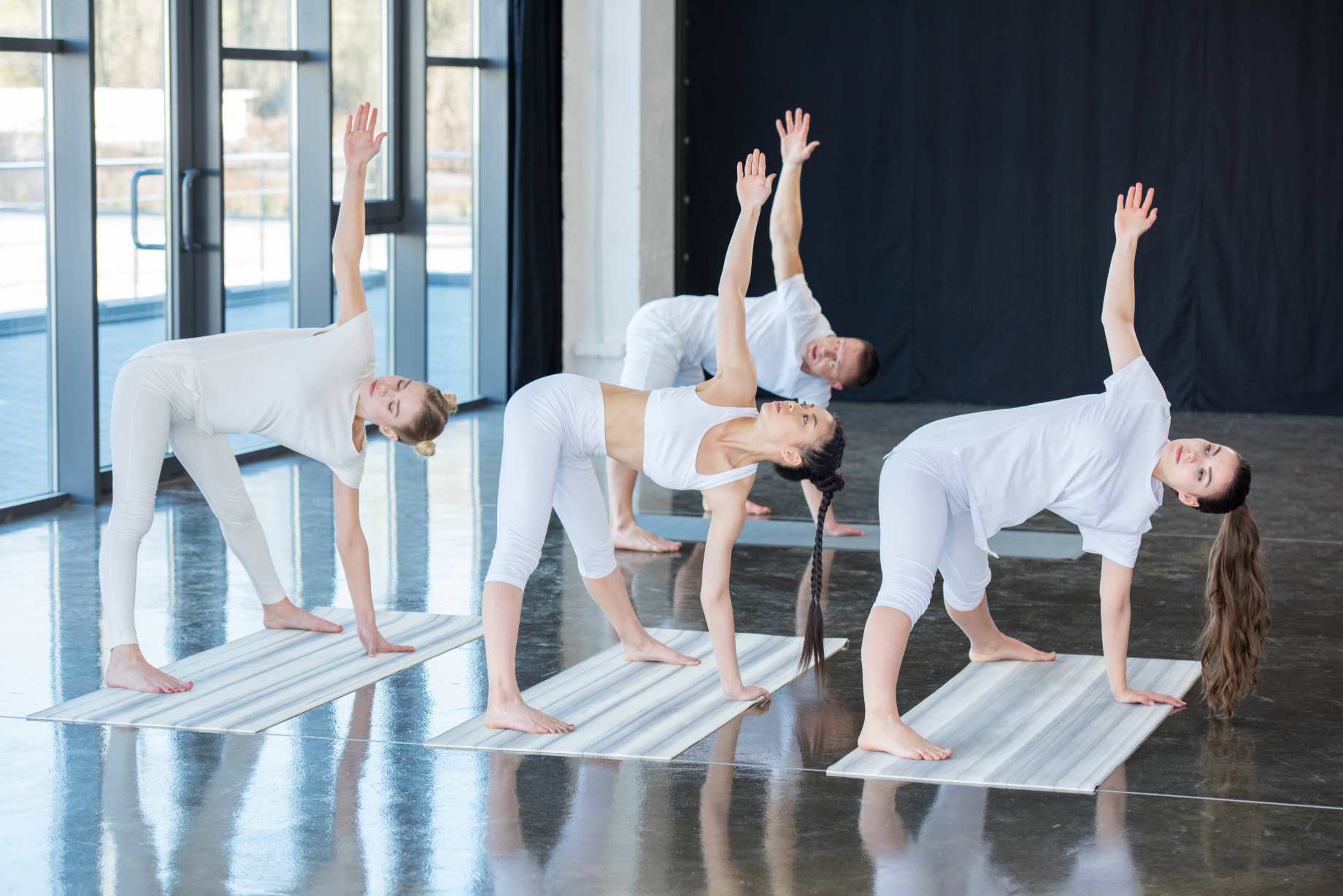
Ardha Chandrasana, or half moon pose, is known for its extensive benefits as a powerful yoga asana. The core strength of this standing balancing pose is that it improves balance and enhances flexibility. It consolidates different muscle groups that promote better postures and alignment while stimulating the digestive system, thus increasing blood flow.
This stretching opens the chest and shoulders, reducing tightness and improving breathing capacity. Ardha Chandrasana also calms stress, making it a holistic and rejuvenating component of any yoga routine. Keep reading to learn more about this yoga posture's precautions, tips, modifications, and health benefits.

Table of Contents

What is Ardha Chandrasana (Half Moon Pose)?
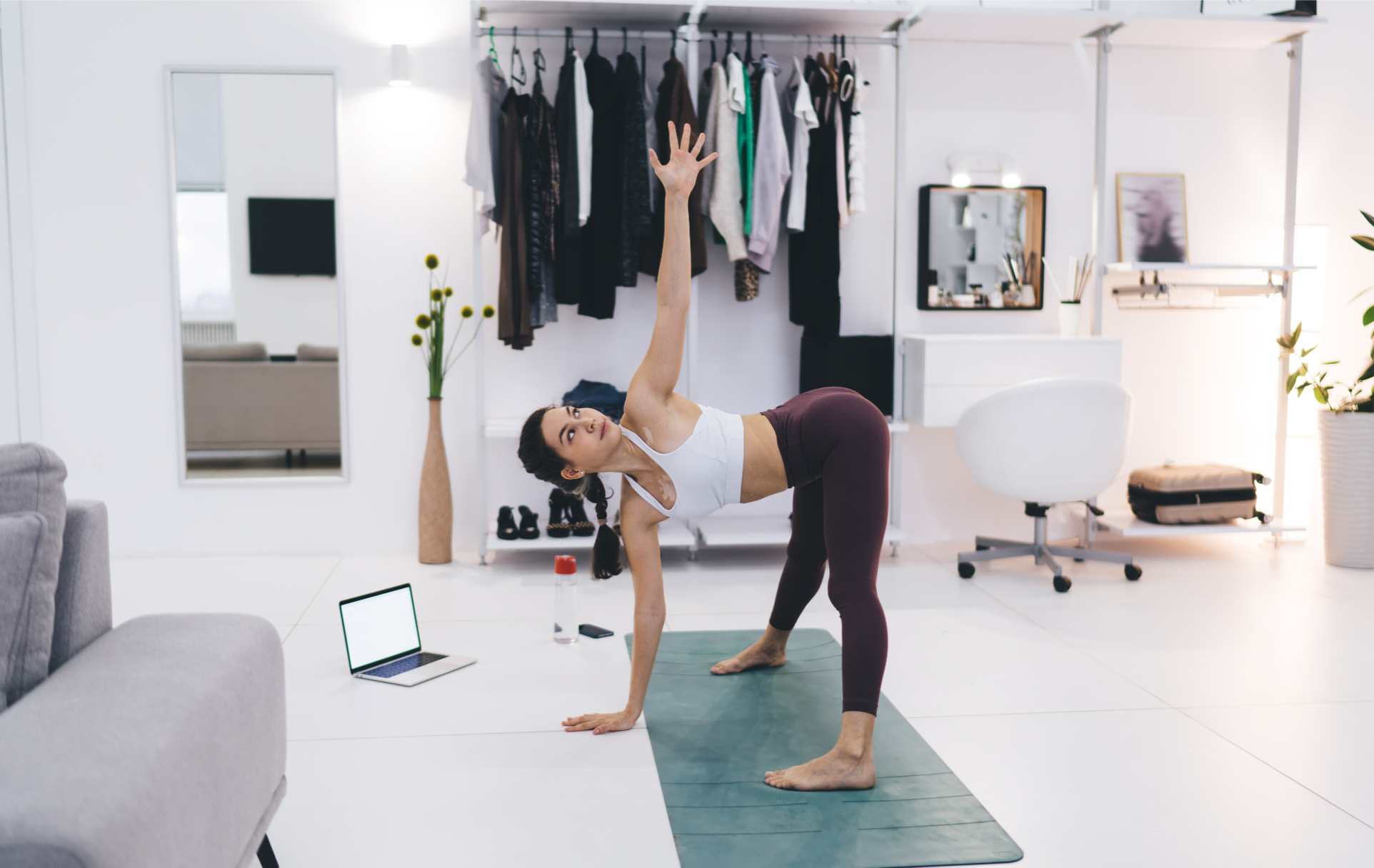
Ardha Chandrasana is the pinnacle yoga pose, also known as the half moon pose, which you can start practising before attempting any advanced yoga postures. This term is derived from Sanskrit words, 'Ardha' means 'Half', 'Chandra' means 'Moon', and 'Asana' means 'yoga posture'. Further, this wonderful exercise encourages you to extend your torso in one direction and lift your leg in another, resembling a half-moon shape.
This yoga pose works on your shoulders, hips, arms, and other body parts to help you relax and avoid injuries.
How Often Should You Perform Ardha Chandrasana?
For optimal benefits, practice Ardha Chandrasana 3-5 times per week. During each session, hold the pose for 20-30 seconds on each side, repeating the pose 2-3 times per side.
This duration and frequency allow your body to build strength, improve balance, and increase flexibility effectively without causing overexertion. Adjust based on your comfort and experience level, ensuring proper alignment and technique throughout your practice.
Top 12 Health Benefits of Ardha Chandrasana
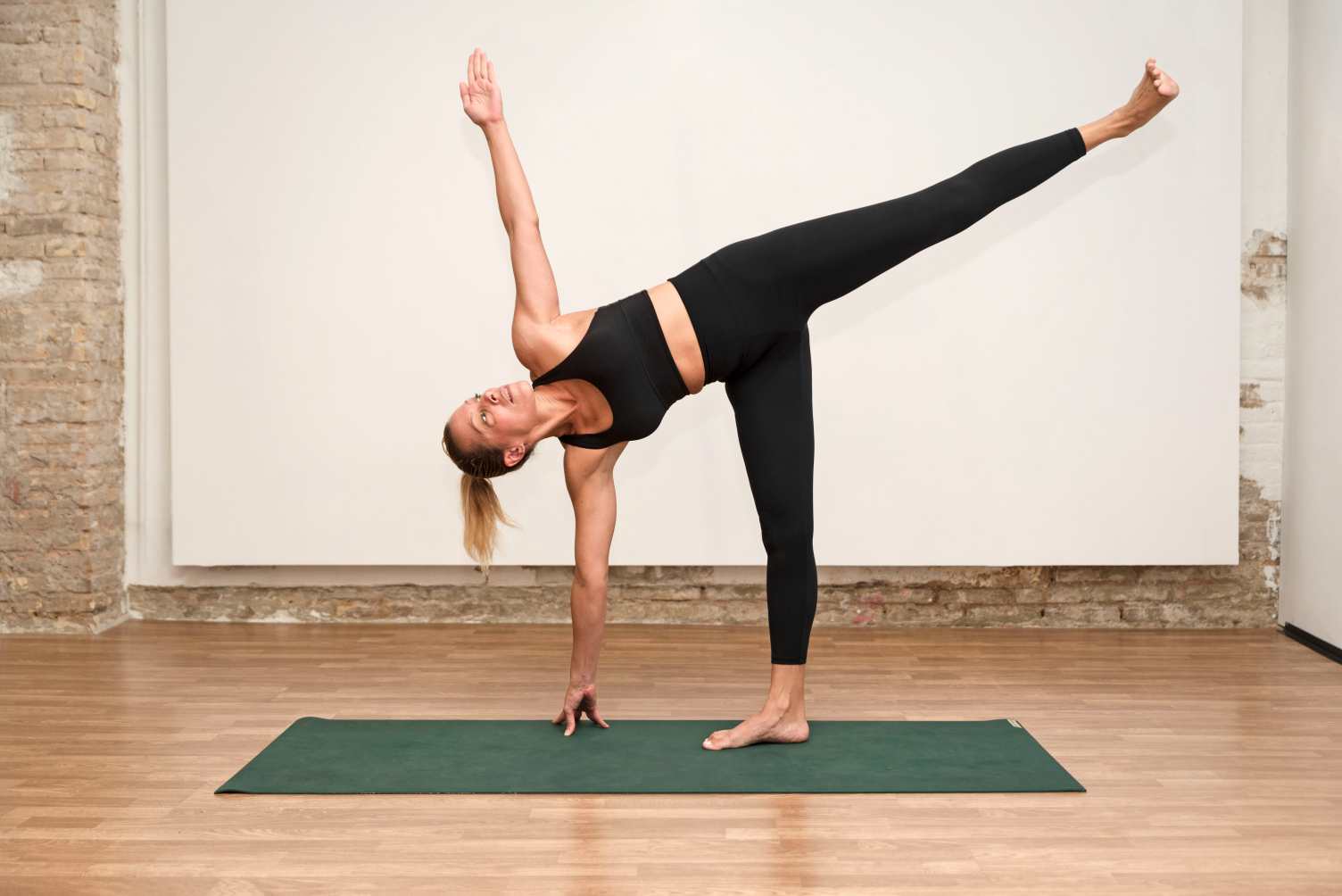
Some of the top health benefits of Ardha Chandrasana are as follows -
Physical Benefits of Ardha Chandrasana
1. Enhances Your Body Posture
It improves your posture since you require stretching your body while practising this yoga asana. So, this exercise is ideal for you if you sit for long hours and suffer from bad body posture.
2. Improves Your Body Balance
Do this exercise with deep and controlled breaths to make the practice of Ardha Chandrasana more effective at improving the efficiency of your breathing muscles, including the intercostal muscles. An improved ability to balance oneself unites consciousness, body, and spirit, thus leading to good health.
3. Stretches Your Body
An effective full-body stretch pose, this exercise relaxes your stiff muscles, stretching your hamstrings, calves, hips and arms. Additionally, it opens up your chest and diaphragm and improves your body’s mobility.
4. Eases Chronic Back and Neck Pain
This yoga asana stretches your body and improves your posture, alleviating back and neck pain. Moreover, you will notice relief in chronic back pain if you practise Chandrasana regularly.
5. Strengthens Your Core Muscles
As you regularly practise this yoga pose, it will strengthen your core muscles and boost your energy. However, ensure to breathe normally during this exercise and engage the core throughout the exercise.
Mental Benefits of Doing Ardha Chandrasana
6. Reduces Anxiety, Stress and Depression
Regular practice of Ardha Chandrasana increases blood circulation into the brain, ensuring it gets enough oxygen and nutrients. This is supplemented by happy hormones that work together to make someone feel relieved, hence reducing anxiety, stress, and depression.
7. Enhances Mind-Body Connection
Ardha Chandrasana promotes mindfulness and body awareness, helping to strengthen the relationship between the mind and body. This increased connection allows one to stay present and experience inner calmness more fully.
Other Benefits
The additional benefits that come with this exercise are as follows:
8. Enhances Muscle Strength and Mobility
Ardha Chandrasana offers considerable muscular power in the lower extremities, such as ankles, legs and knees. This maintains stability and improves flexibility in these muscles.
9. Alleviates Sciatica Pain
It is known to help reduce sciatic nerve pain by reducing inflammation around this nerve. In the pose, the pressure on the sciatic nerve is decreased by stretching the lower back and buttock muscles.
10. Reduces Menstrual Pain
In addition, a half-moon posture may relieve menstrual pain. Mild stretching and strengthening of the pelvic area can improve blood flow and muscle relaxation and promote general reproductive health by reducing menstrual pain.
11. Improves Digestion
This yoga posture is helpful in improving digestion and preventing constipation and bowel problems. Twisting the belly stimulates the digestive system, enhancing the organs' functioning and thus ensuring regular bowel movements.
12. Stretches the Spine and Strengthens the Hips and Lower Abdomen
As you do Ardha Chandrasana, your spine stretches out while your hips and lower abdomen are strengthened. This not only improves flexibility but also decreases stiffness. At the same time, it increases the tone of core muscles, resulting in better posture and coordination throughout movement.
Types of Ardha Chandrasana
There are different variations of Ardha Chandrasana (half moon pose), each with its own unique advantages and difficulties. Some common types include:
1. Ardha Chandrasana I (Classic Variation)

The traditional one where you stand on one leg and stretch the other parallel to the ground, with a hand or block supporting your balance on the floor while another arm stretches towards the sky.
2. Ardha Chandrasana II (Revolved Variation)
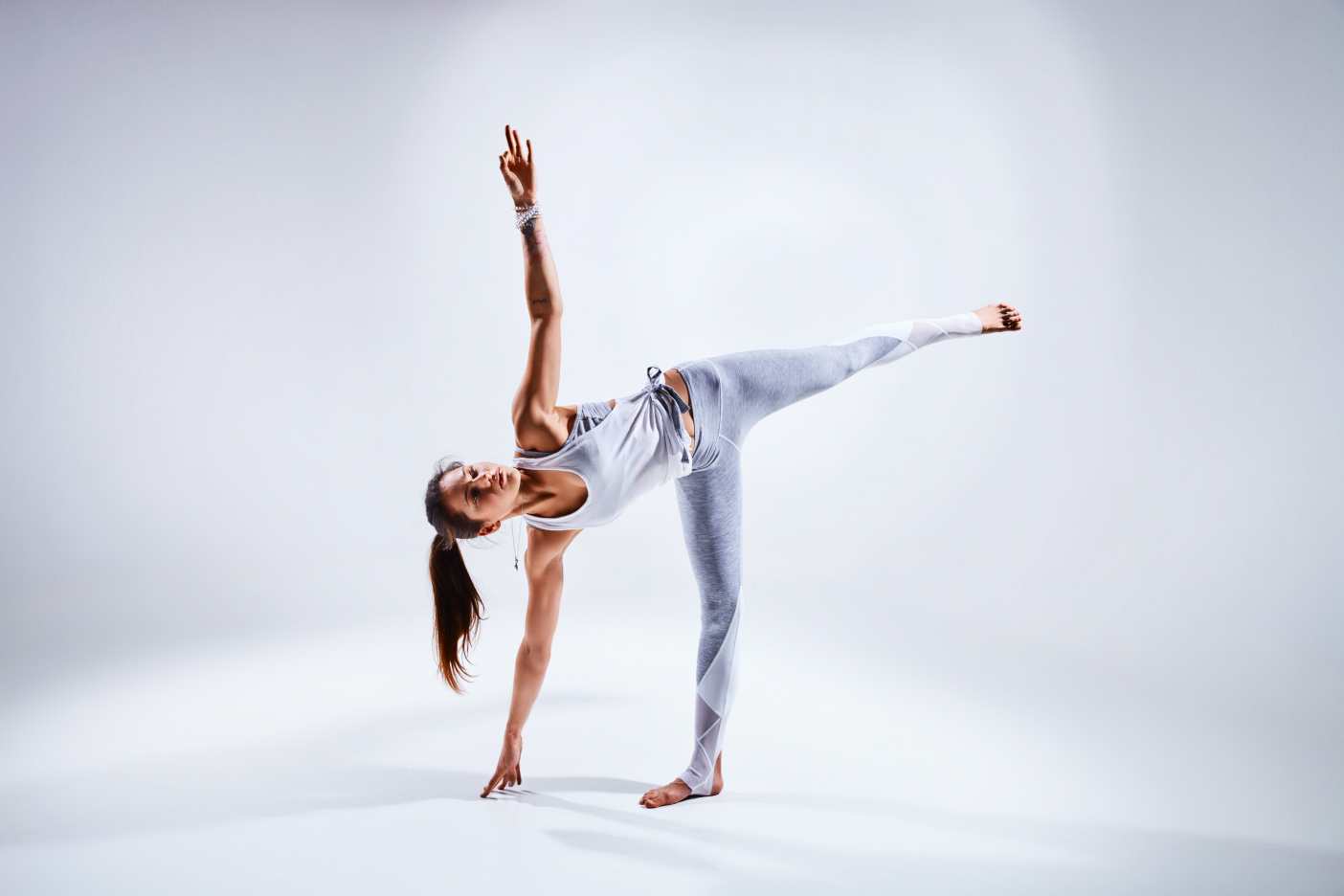
Another modification of this asana involves a twist in which you bring down your upper limb and take it under the body as you look in that direction, thus creating a twist through your trunk.
3. Ardha Chandrasana III (Extended Variation)

This version requires that you extend both arms and legs away from each other as far as possible, lengthening from fingertips to toes while maintaining balance and stability.
4. Ardha Chandrasana with Bound Hands
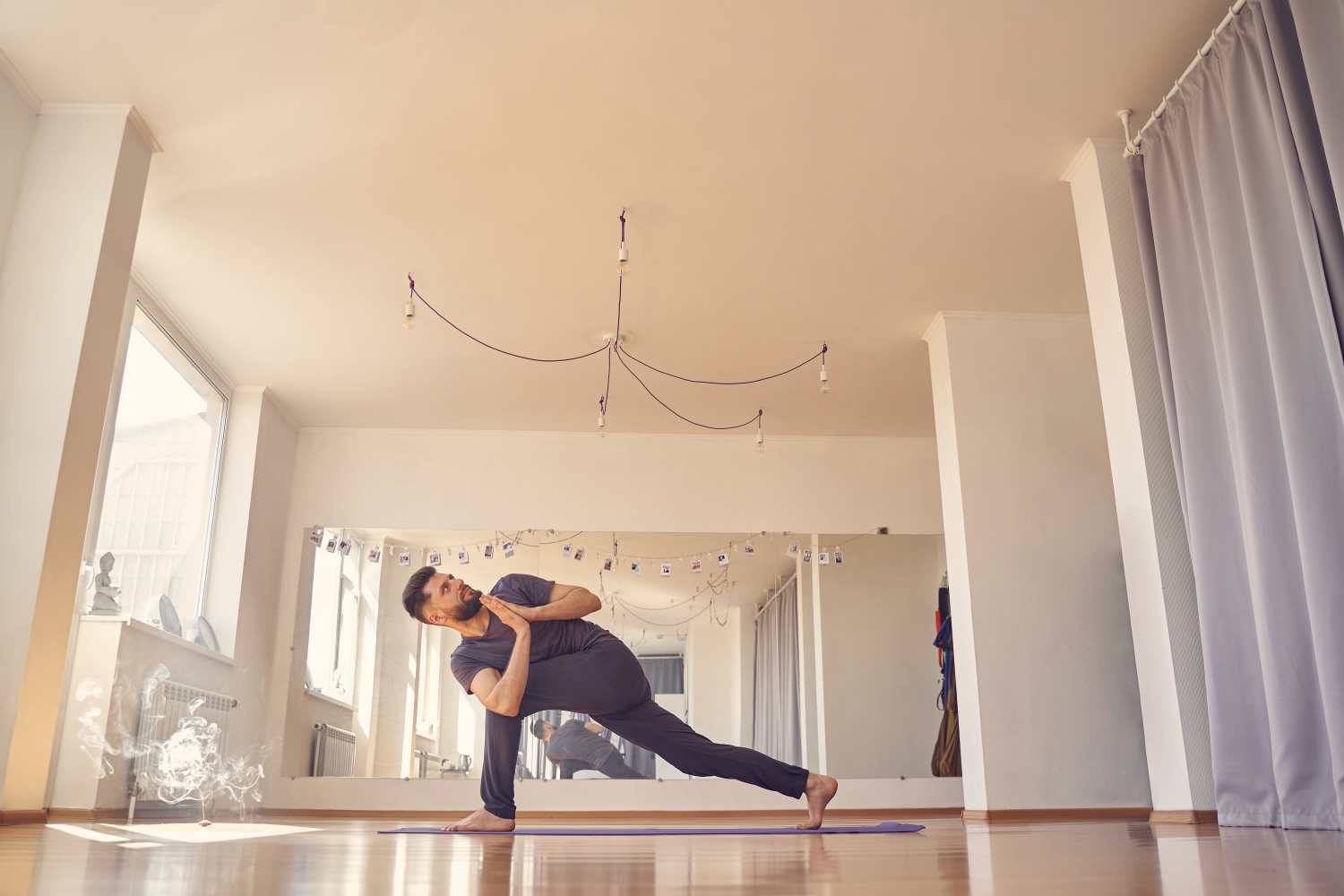
In this variation, practitioners clasp their hands behind their backs while assuming a half-moon pose to enhance concentration, strength, flexibility and balance.
What are the Steps to Perform Ardha Chandrasana?
So, now that you have an idea of this yoga pose, here is a step-by-step guide that you can follow to practise the exercise:
Step 1: Begin the yogasana by doing the Triangle pose. Keep your right leg forward and bend your knee gently as you gradually bring your left hand to your hips.
Step 2: Slowly place your right hand on the floor mat in front of your right foot. Keep your hands under your shoulders to maintain the correct posture. Place your hands so that only your fingertips touch the floor mat.
Step 3: Straighten your right leg while gently lifting your left foot off the floor. Try to keep your left leg as straight as possible.
Step 4: Stack your left hip point to the right by slowly opening your hips.
Step 5: You will notice that your left leg is parallel to the floor. However, ensure you flex your foot so your toes point in the left direction.
Step 6: As you balance it adequately, try to raise your arms and stretch your chest/diaphragm. Ensure to make a straight line with your right leg and left hand.
Step 7: Now, turn your head so that you can see the fingertips of your left hand.
Step 8: Hold this pose for 5-6 minutes and release. Repeat this pose on the other side.
Things Required to Practise Ardha Chandrasana
For effective and safe practising of Ardha Chandrasana, you should always have several essential things with you. These tools and considerations will help you maintain proper alignment, comfort and concentration during yoga. What You’ll Need:
- Yoga Mat: A good-quality non-skid yoga mat provides grip and cushioning for practising Ardha Chandrasana safely and comfortably.
- Comfortable Clothing: Put on breathable, flexible clothes that allow a full range of body movements. Tight-fitting clothes can restrict movement, while overly loose garments might get in the way.
- Optional Yoga Block: Beginners can use a yoga block. It can help them maintain a certain balance and support.
- Optional Wall Support: Practise near the wall can be extra supportive, especially for newcomers or those who wish to refine their balance.
- Enough Open Space: Ensure there is enough space around you so your limbs extend fully without any blockage. This will help you focus more on your practice while feeling safer.
- A Bottle of Water: Staying hydrated during these poses is essential, mainly if used within a more intense yoga sequence. Ensure you have water handy when you practise drinking before or after it.
- Optional Yoga Strap: A yoga strap may be handy for someone who needs assistance with flexibility or wants to deepen the stretch.
- Positive Attitude: Take your time, make your mind and be positive whenever setting yourself ready for practising this pose.
6 Tips for Practising Ardha Chandrasana
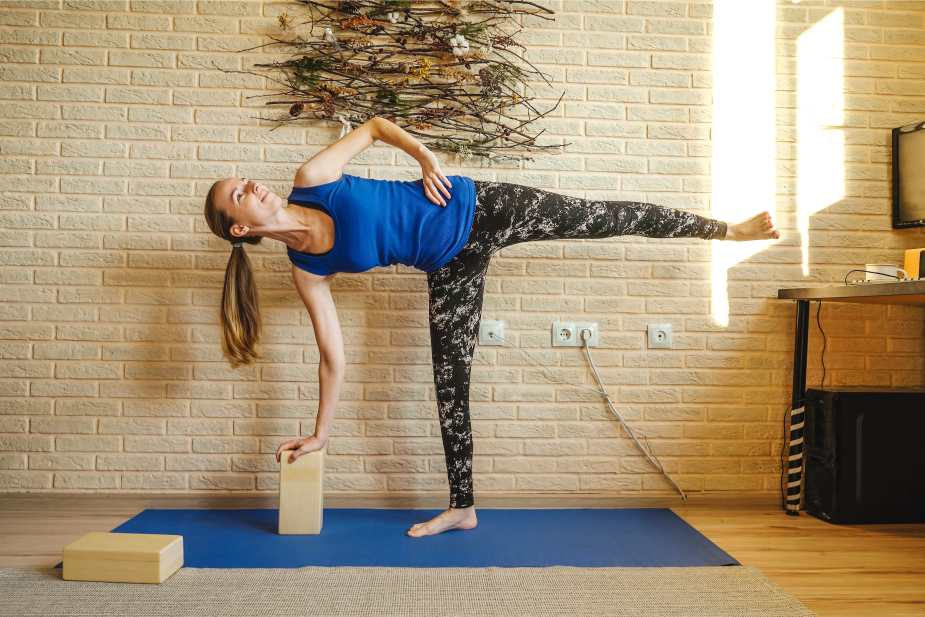
The best way to perform this asana is under expert supervision. However, if you follow the below tips, you will be able to start with the asana:
- Synchronise Your Breath: It is of utmost importance to synchronise your breath while performing the exercise. Therefore, ensure that you inhale and exhale properly while practising this exercise.
- Know the Correct Twist: Knowing the correct twists and turns is imperative as you start the exercise. A wrong step might lead to sprains and injuries.
- Use a Cushion or Blanket: While performing this exercise, try using a cushion or blanket to support your legs, knees, and ankles. This will ensure you are comfortable while doing the asana.
- Try to Focus Your Mind: You must focus your mind while performing this asana. The more you focus, the more synchronised and peaceful your body will be.
- Wear Stretchable Garments: Since this exercise involves a lot of stretching, it will be helpful to wear stretchable garments. This will not only ensure comfort but also allow easy movement.
- Use a Chair for Support: A chair can support your back, hands, and spine, reducing the chances of falling and getting injured.
Precautions and Contraindications of Ardha Chandrasana
So, you now have an idea of the advantages of Ardha Chandrasana. However, here are some precautions and contraindications you must follow as well:
You must avoid practising this pose if you have just given birth.
Avoid doing this asana if you suffer from injury, sprains or severe pain in the back, neck or lower abdomen pain.
Avoid consuming meals for approximately 40 minutes before practising this exercise.
Remember to practise warm-up poses before doing the half-moon pose.
Practising this pose is not a good idea if you have a low blood sugar level.
Avoid practising this pose if you have undergone any surgery.
Easy Modifications to an Ardha Chandrasana
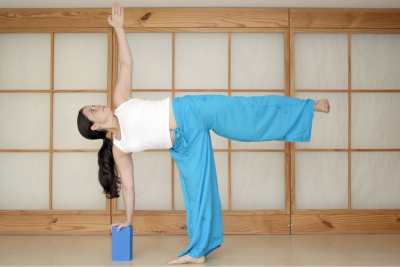
To assist you in your journey of practising this yoga asana, here are certain modifications you can make:
If you need to work on your balance, use your fingers as support to ground them on the floor. As you feel the balance, gradually lift one of your hands and allow your hand on the ground to hover above the floor.
Use a block or cushion to support your palms. This will also help you with flexibility and balance.
Keep your lifted foot on a wall behind you to provide additional support. This will again allow you to position your arms properly.
Keeping your gaze towards your hand and upwards can be challenging at times. To work on this, keep your eyes on the floor and move it upwards slowly.
Who Should Avoid Doing Ardha Chandrasana?
Ardha Chandrasana is suitable for many people, but some must avoid or adopt caution when practising this pose. These are some factors to consider:
- People with Balance Problems: If your balance problems are severe, you may find performing this pose difficult, and it can increase your risk of falling and getting injured. Therefore, practise near a wall for support or use a yoga block for stability.
- Individuals with Hip or Knee Injuries: Those who have sustained any recent or severe injuries on their hips, knees and ankles should refrain from doing it until they heal fully, as this pose puts too much weight and strain on them.
- Those Suffering from Low Blood Pressure: This posture creates an inverted state of balance. Hence, people with low blood pressure might feel faint-headed or dizzy after assuming it.
- Women Expecting Babies: Pregnant women should avoid this position, especially during the latter part of their pregnancies, to avoid falling due to a lack of stability while standing on one leg only.
- Individuals with Back Problems: If you have severe spinal conditions such as herniated discs or chronic scoliosis, discuss this pose with a healthcare provider first because it involves twisting and opening the backbone.
Including Ardha Chandrasana in your yoga routine has many physical and mental advantages. It addresses various elements of physical health, from lower body muscle strength and mobility to back pain reduction and improved digestion.
This pose is versatile in addressing the different aspects of physical health. Whether improving your physical fitness, getting clear thinking, or stabilising emotions, Ardha Chandrasana is a holistic practice to add to your schedule.














